
History of the University of Pittsburgh
Encyclopedia
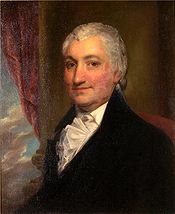
University of Pittsburgh
The University of Pittsburgh, commonly referred to as Pitt, is a state-related research university located in Pittsburgh, Pennsylvania, United States. Founded as Pittsburgh Academy in 1787 on what was then the American frontier, Pitt is one of the oldest continuously chartered institutions of...
, commonly referred to as Pitt, is an independent, state-related
Commonwealth System of Higher Education
The Commonwealth System of Higher Education is the organizing body of Pennsylvania's "state-related" schools, which allows the independent control of the universities while supplying them with the public funds needed for operations at each institution. Universities in the System are considered...
, doctoral/research university
University
A university is an institution of higher education and research, which grants academic degrees in a variety of subjects. A university is an organisation that provides both undergraduate education and postgraduate education...
in Pittsburgh
Pittsburgh, Pennsylvania
Pittsburgh is the second-largest city in the US Commonwealth of Pennsylvania and the county seat of Allegheny County. Regionally, it anchors the largest urban area of Appalachia and the Ohio River Valley, and nationally, it is the 22nd-largest urban area in the United States...
, Pennsylvania
Pennsylvania
The Commonwealth of Pennsylvania is a U.S. state that is located in the Northeastern and Mid-Atlantic regions of the United States. The state borders Delaware and Maryland to the south, West Virginia to the southwest, Ohio to the west, New York and Ontario, Canada, to the north, and New Jersey to...
, United States
United States
The United States of America is a federal constitutional republic comprising fifty states and a federal district...
. For most of its history, Pitt was a private institution until it became part of the Commonwealth System of Higher Education
Commonwealth System of Higher Education
The Commonwealth System of Higher Education is the organizing body of Pennsylvania's "state-related" schools, which allows the independent control of the universities while supplying them with the public funds needed for operations at each institution. Universities in the System are considered...
in 1966.
The Founding

Hugh Henry Brackenridge
Hugh Henry Brackenridge was an American writer, lawyer, judge, and justice of the Pennsylvania Supreme Court.A frontier citizen in Pittsburgh, Pennsylvania, USA, he founded both the Pittsburgh Academy, now the University of Pittsburgh, and the Pittsburgh Gazette, still operating today as the...
as Pittsburgh Academy in 1787, the University of Pittsburgh is among a select group of universities and colleges established in the 18th century in the United States
United States
The United States of America is a federal constitutional republic comprising fifty states and a federal district...
. It is the oldest continuously chartered institution of learning in the U.S., west of the Allegheny Mountains
Allegheny Mountains
The Allegheny Mountain Range , also spelled Alleghany, Allegany and, informally, the Alleghenies, is part of the vast Appalachian Mountain Range of the eastern United States and Canada...
. The school began its life as a preparatory school, presumably in a log cabin
Log Cabin (University of Pittsburgh)
The Log Cabin at the University of Pittsburgh, located near Forbes Avenue, in Pittsburgh, Pennsylvania adjacent to the school's Cathedral of Learning, serves as a landmark that symbolizes the university's origins on the 18th Century western frontier of the early United States...
, in Western Pennsylvania, then a frontier. The academy possibly grew out of a school that was active before the charter was granted, perhaps as early as 1770. Hugh Henry Brackenridge sought and obtained a charter for the school from the state legislature of the Commonwealth of Pennsylvania
Pennsylvania
The Commonwealth of Pennsylvania is a U.S. state that is located in the Northeastern and Mid-Atlantic regions of the United States. The state borders Delaware and Maryland to the south, West Virginia to the southwest, Ohio to the west, New York and Ontario, Canada, to the north, and New Jersey to...
that was passed by the assembly on February 28, 1787, just ten weeks before the opening of the Constitutional Convention
Philadelphia Convention
The Constitutional Convention took place from May 14 to September 17, 1787, in Philadelphia, Pennsylvania, to address problems in governing the United States of America, which had been operating under the Articles of Confederation following independence from...
in Philadelphia.http://digital.library.pitt.edu/cgi-bin/t/text/pageviewer-idx?c=pitttext;cc=pitttext;q1=pittsburgh%20academy;rgn=full%20text;idno=00adc8925m;didno=00adc8925m;view=image;seq=0353 http://digital.library.pitt.edu/cgi-bin/t/text/pageviewer-idx?c=pittmiscpubs;cc=pittmiscpubs;g=documentingpitt;xc=1;xg=1;q1=hopkins;rgn=full%20text;idno=00afj8718m;didno=00afj8718m;view=image;seq=48;node=00afj8718m%3A6;page=root;size=s;frm=frameset; The school was soon teaching the rudiments of the "sacred six" of the Scottish universities, as founder Hugh Henry Brackenridge was Scottish.http://digital.library.pitt.edu/cgi-bin/t/text/pageviewer-idx?c=pittmiscpubs;cc=pittmiscpubs;xc=1;idno=00afj8718m;g=documentingpitt;xg=1;q1=sacred%20six;size=l;frm=frameset;seq=49 A brick building was erected in 1790 on the south side of Third Street and Cherry Alley for the Pittsburgh Academy.http://digital.library.pitt.edu/cgi-bin/t/text/pageviewer-idx?c=pittyearbooks;cc=pittyearbooks;rgn=full%20text;idno=1909e49702;didno=1909e49702;view=image;seq=22;node=1909e49702%3A7;page=root;size=s;frm=frameset;http://digital.library.pitt.edu/cgi-bin/t/text/pageviewer-idx?c=pittyearbooks;cc=pittyearbooks;rgn=full%20text;idno=1910e49702;didno=1910e49702;view=image;seq=12;node=1910e49702%3A4;page=root;size=s;frm=frameset;http://digital.library.pitt.edu/cgi-bin/t/text/pageviewer-idx?c=pittmiscpubs&cc=pittmiscpubs&idno=00c50130m&node=00c50130m%3A8&frm=frameset&view=image&seq=21 The small two-story brick building, with a gable facing the alley, contained three rooms: one below and two above.http://digital.library.pitt.edu/cgi-bin/t/text/pageviewer-idx?c=pitttext;cc=pitttext;q1=pittsburgh%20academy;rgn=full%20text;idno=00hc14502m;didno=00hc14502m;view=image;seq=0012
The Western University
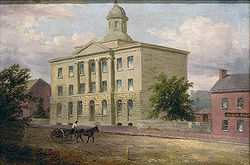
Pennsylvania
The Commonwealth of Pennsylvania is a U.S. state that is located in the Northeastern and Mid-Atlantic regions of the United States. The state borders Delaware and Maryland to the south, West Virginia to the southwest, Ohio to the west, New York and Ontario, Canada, to the north, and New Jersey to...
amended the school's 1787 charter to confer university status. The school took the name the Western University of Pennsylvania, or WUP, and was intended to be the western sister institution to the University of Pennsylvania
University of Pennsylvania
The University of Pennsylvania is a private, Ivy League university located in Philadelphia, Pennsylvania, United States. Penn is the fourth-oldest institution of higher education in the United States,Penn is the fourth-oldest using the founding dates claimed by each institution...
in Philadelphia. By 1830, WUP had moved into a new three-story, freestone-fronted building, with Ionic columns and a cupola, near its original buildings fronting the south side of Third Street, between Smithfield Street and Cherry Alley in downtown Pittsburgh. By the 1830s, the university faced severe financial pressure to abandon its traditional liberal education in favor of the state legislature's
Pennsylvania General Assembly
The Pennsylvania General Assembly is the state legislature of the U.S. state of Pennsylvania. The legislature convenes in the State Capitol building in Harrisburg. In colonial times , the legislature was known as the Pennsylvania Provincial Assembly. Since the Constitution of 1776, written by...
desire for it to provide more vocational training. The decision to remain committed to liberal education nearly killed the university, but it persevered despite its abandonment by the city and state. It was also during this era that founder of Mellon Bank, Thomas Mellon
Thomas Mellon
Thomas Alexander Mellon was a Scotch-Irish American, entrepreneur, lawyer, and judge, best known as the founder of Mellon Bank and patriarch of the Mellon family of Pittsburgh, Pennsylvania.-Early life:...
(Class of 1837), graduated and later taught at WUP. http://digital.library.pitt.edu/cgi-bin/t/text/pageviewer-idx?c=pittyearbooks;cc=pittyearbooks;rgn=full%20text;idno=1909e49702;didno=1909e49702;view=image;seq=22;node=1909e49702%3A7;page=root;size=s;frm=frameset;http://digital.library.pitt.edu/cgi-bin/t/text/pageviewer-idx?c=pittyearbooks;cc=pittyearbooks;rgn=full%20text;idno=1910e49702;didno=1910e49702;view=image;seq=12;node=1910e49702%3A4;page=root;size=s;frm=frameset;http://digital.library.pitt.edu/cgi-bin/t/text/pageviewer-idx?c=pittmiscpubs&cc=pittmiscpubs&idno=00c50130m&node=00c50130m%3A8&frm=frameset&view=image&seq=21
Fires
The University's buildings, along with most of its records and files, were destroyed in the Great Fire of 1845 that wiped out 20 square blocks of the most valuable part of Pittsburgh. Classes were temporarily held in Trinity Church until a new building was constructed on Duquesne Way (on what was the site of the former Horne'sHorne's
The Joseph Horne Company, often referred to simply as Joseph Horne's or Horne's, was an iconic, regional department store chain based in Pittsburgh, Pennsylvania. The store was one of the oldest in the country being founded on February 22, 1849 but due to its regional presence in the country, it...
department store). Only four years later, in 1849, this building also was destroyed by fire. Due to the catastrophic nature of these fires, operations were suspended for a few years to allow the University time to regroup and rebuild. By 1854, WUP had erected a new 16-room brick building, with a slate roof, that was designed to be nearly fireproof. This building was erected on the corner of Ross and Diamond (now Forbes Avenue) streets (site of the present day City-County building
Pittsburgh City-County Building
The Pittsburgh City-County Building is the seat of government for the City of Pittsburgh and houses both Pittsburgh and Allegheny County offices. It is located in Downtown Pittsburgh at 414 Grant Street, Pittsburgh, Pennsylvania.-Design:...
) and classes resumed in 1855. It is during this era, in 1867, that Samuel Pierpoint Langley, inventor and aviation pioneer for which Langley Air Force Base is named, was chosen as director of the Allegheny Observatory
Allegheny Observatory
The Allegheny Observatory is an American astronomical research institution, a part of the Department of Physics and Astronomy at the University of Pittsburgh. The facility is listed on the National Register of Historical Places The Allegheny Observatory is an American astronomical research...
that was gifted to WUP in 1865. Langley was professor of astronomy and physics and remained at WUP until 1891, when he was succeeded by another prominent astronomer, James Keeler. Growing quickly during this period, WUP constructed a second building, in 1877, on Ross Street. However, in 1882, the Allegheny County courthouse was severely damaged in yet another fire, so the University sold its buildings to the county for use as a courthouse until a new one could be constructed. This action prompted the University to move its campus from the downtown area.http://digital.library.pitt.edu/cgi-bin/t/text/pageviewer-idx?c=pittyearbooks;cc=pittyearbooks;rgn=full%20text;idno=1909e49702;didno=1909e49702;view=image;seq=22;node=1909e49702%3A7;page=root;size=s;frm=frameset;http://digital.library.pitt.edu/cgi-bin/t/text/pageviewer-idx?c=pittyearbooks;cc=pittyearbooks;rgn=full%20text;idno=1910e49702;didno=1910e49702;view=image;seq=12;node=1910e49702%3A4;page=root;size=s;frm=frameset;http://digital.library.pitt.edu/cgi-bin/t/text/pageviewer-idx?c=pittmiscpubs&cc=pittmiscpubs&idno=00c50130m&node=00c50130m%3A8&frm=frameset&view=image&seq=21
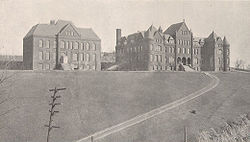
A move north
WUP moved to two former theological seminary buildings on North Avenue in Allegheny CityAllegheny, Pennsylvania
Allegheny City was a Pennsylvania municipality located on the north side of the junction of the Allegheny and Ohio rivers, across from downtown Pittsburgh. It was annexed by Pittsburgh in 1907...
(present-day North Side
Northside (Pittsburgh)
North Side refers to the region of Pittsburgh, Pennsylvania, located to the north of the Allegheny River and the Ohio River...
). The University stayed there for eight years before moving to a 10 acres (40,468.6 m²) site on the North Side Observatory Hill at the location of its Allegheny Observatory
Allegheny Observatory
The Allegheny Observatory is an American astronomical research institution, a part of the Department of Physics and Astronomy at the University of Pittsburgh. The facility is listed on the National Register of Historical Places The Allegheny Observatory is an American astronomical research...
. There, it constructed two new buildings, Science Hall and Main Hall, that were occupied by 1889 and 1890 respectively. During this era, the first collegiate football team was formed at Pitt in 1889. In 1892, the Western Pennsylvania Medical College was amalgamated into the University. By 1893, the University had graduated its first African-American, William Dammond.http://www.pitt.edu/history/1893.html In 1895, WUP established its School of Law and Andrew Carnegie
Andrew Carnegie
Andrew Carnegie was a Scottish-American industrialist, businessman, and entrepreneur who led the enormous expansion of the American steel industry in the late 19th century...
and George Westinghouse
George Westinghouse
George Westinghouse, Jr was an American entrepreneur and engineer who invented the railway air brake and was a pioneer of the electrical industry. Westinghouse was one of Thomas Edison's main rivals in the early implementation of the American electricity system...
were elected to the Board of Trustees where they joined Andrew Mellon who was elected in 1894. The Pittsburgh College of Pharmacy and Pittsburgh Dental School also joined the University in 1896. In 1898, the first women, sisters Margaret and Stella Stein, graduated from the University.http://www.pitt.edu/history/1898.html. During this period, University engineering professor Reginald Fessenden
Reginald Fessenden
Reginald Aubrey Fessenden , a naturalized American citizen born in Canada, was an inventor who performed pioneering experiments in radio, including early—and possibly the first—radio transmissions of voice and music...
was conducting pioneering work in radio broadcasting. By 1904, playing at Exposition Park
Exposition Park (Pittsburgh)
Exposition Park was a baseball park in Pittsburgh, Pennsylvania from 1890 to circa 1915. It was located on the north side of the Allegheny River across from Pittsburgh's downtown area. Prior to the construction of this version of Exposition Park, two previous ballparks of the same name were...
, the University had its first undefeated football team.http://www.pitt.edu/history/1906.htmlhttp://digital.library.pitt.edu/cgi-bin/t/text/pageviewer-idx?c=pittyearbooks;cc=pittyearbooks;rgn=full%20text;idno=1909e49702;didno=1909e49702;view=image;seq=22;node=1909e49702%3A7;page=root;size=s;frm=frameset;http://digital.library.pitt.edu/cgi-bin/t/text/pageviewer-idx?c=pittyearbooks;cc=pittyearbooks;rgn=full%20text;idno=1910e49702;didno=1910e49702;view=image;seq=12;node=1910e49702%3A4;page=root;size=s;frm=frameset;http://digital.library.pitt.edu/cgi-bin/t/text/pageviewer-idx?c=pittmiscpubs&cc=pittmiscpubs&idno=00c50130m&node=00c50130m%3A8&frm=frameset&view=image&seq=21
20th century
Citing a need to avoid confusion, distinguish itself from the University of Pennsylvania, and return to its roots by identifying itself with the city, the Western University of Pennsylvania, by act of the state legislature, was renamed the University of Pittsburgh in the summer of 1908. During this time, Pitt had also outgrown its accommodations on the North Side of Pittsburgh and its departments had been scattered throughout the city for years. The Department of Medicine was in West Penn Hospital, the departments of Dentistry and Pharmacy were in a building on a hilltop at Pride and Bluff Streets, and the Law School was in the former University building at Ross and Diamond Streets after having moved from the Orphan's Court in the Old Allegheny County Court House. To consolidate all of its components on one campus, WUP bought 43 acres (174,015 m²) of land in December 1907 in what is now the Oakland neighborhood of Pittsburgh and began relocating departments there by 1909.http://digital.library.pitt.edu/cgi-bin/t/text/pageviewer-idx?c=pittyearbooks;cc=pittyearbooks;rgn=full%20text;idno=1909e49702;didno=1909e49702;view=image;seq=23;node=1909e49702%3A7;page=root;size=s;frm=frameset The initial campus plan for the University centered on the winning submission from a national architectural contest that incorporated a Greek Acropolis design by Henry HornbostelHenry Hornbostel
Henry Hornbostel was an American architect.He designed more than 225 buildings, bridges, and monuments in the United States; currently 22 are listed on the National Register of Historic Places....
for 30 buildings. However, due to financial and other constraints, only four of the buildings were constructed in this style, of which only Thaw Hall
Thaw Hall
Thaw Hall is an historic academic building on the campus of the University of Pittsburgh that is a contributing property to the Schenley Farms National Historic District and has been named a Pittsburgh History and Landmarks Foundation Historic Landmark...
remains today. It was also during this period that the university, led by Chancellor Samuel McCormick
Samuel McCormick
Samuel Black McCormick was the ninth Chancellor of the University of Pittsburgh.His administration is best known for changing the name of the university and moving and expanding it from Allegheny City to its current location in Oakland...
, would again fend off pressures to abandoned the school's commitment to liberal education in favor of more technical-based training. During his administration, McCormick would also lead the university into a new level of national recognition, expansion, and growth, as well as began institutional support of athletics.
World War I
When the United StatesUnited States
The United States of America is a federal constitutional republic comprising fifty states and a federal district...
entered World War I
World War I
World War I , which was predominantly called the World War or the Great War from its occurrence until 1939, and the First World War or World War I thereafter, was a major war centred in Europe that began on 28 July 1914 and lasted until 11 November 1918...
in 1917, by law of Congress
United States Congress
The United States Congress is the bicameral legislature of the federal government of the United States, consisting of the Senate and the House of Representatives. The Congress meets in the United States Capitol in Washington, D.C....
, all male college students were subject to military training. In the spring of 1918, Pitt began to train students for war-related industrial work. The army
United States Army
The United States Army is the main branch of the United States Armed Forces responsible for land-based military operations. It is the largest and oldest established branch of the U.S. military, and is one of seven U.S. uniformed services...
built seven frame barracks for housing 1,000 men, a 2,000 seat mess hall, an administrative building and a YMCA
YMCA
The Young Men's Christian Association is a worldwide organization of more than 45 million members from 125 national federations affiliated through the World Alliance of YMCAs...
Hospitality House on the hillside campus. In September of that year, the federal government
Federal government of the United States
The federal government of the United States is the national government of the constitutional republic of fifty states that is the United States of America. The federal government comprises three distinct branches of government: a legislative, an executive and a judiciary. These branches and...
announced it was taking control of colleges and universities for the training of officers and technical specialists in the Student Army Training Corps (SATC), but by November 11, Germany
Germany
Germany , officially the Federal Republic of Germany , is a federal parliamentary republic in Europe. The country consists of 16 states while the capital and largest city is Berlin. Germany covers an area of 357,021 km2 and has a largely temperate seasonal climate...
had surrendered and by December all student soldiers were out of the armed services. The war activity had caused a major influx of students to Pitt and a corresponding shortage of space. The barracks, meant to be temporary, were used for some time to help alleviate congestion, but it was apparent that this was an inadequate solution; by 1920, Pitt alumni had begun a fund raising campaign to construct a sorely-needed new building. The campaign was a success, raising $670,000 ($70,000 more than was needed), due in part to both the excitement of alumni with the championship caliber play of the Pitt football team (national champions or undefeated in 1910, 1915, 1916, 1917, 1918 and 1920) and by a $100,000 contribution directly from the Athletic Committee's football receipts. By 1921, Alumni Hall (now known as Eberly Hall), designed Benno Janssen
Benno Janssen
Benno Janssen was an American architect.-Childhood, Education and Career:Benno Janssen was born in St. Louis, Missouri, the son of Oscar Janssen and Thekla Susenbeth. Janssen studied at the University of Kansas. In 1899, he began working in architecture in Boston, Massachusetts. He also continued...
(the runner-up for the previous campus plan architectural competition), was dedicated and signified a departure from (and end to) the Acropolis Plan. This enthusiasm for football would also lead to the construction of Pitt Stadium
Pitt Stadium
Pitt Stadium was a stadium located on the campus of the University of Pittsburgh in the Oakland section of Pittsburgh in the U.S. state of Pennsylvania from 1925 to 1999. It served primarily as the home of the University of Pittsburgh's football team, the Pittsburgh Panthers...
in 1925.
A national landmark
In the 1920s, new university chancellor John Gabbert BowmanJohn Gabbert Bowman
John Gabbert Bowman was the tenth Chancellor of the University of Pittsburgh and the ninth President of the University of Iowa....
declared that he had a vision for a centerpiece "tall building" for the university. The 14 acres (56,656 m²) Frick Acres property in Oakland was soon purchased and plans for the campus shifted focus from the hillside to a neo Gothic Revival
Gothic Revival architecture
The Gothic Revival is an architectural movement that began in the 1740s in England...
plan that today comprises the Cathedral of Learning
Cathedral of Learning
The Cathedral of Learning, a Pittsburgh landmark listed in the National Register of Historic Places, is the centerpiece of the University of Pittsburgh's main campus in the Oakland neighborhood of Pittsburgh, Pennsylvania, United States...
, Heinz Memorial Chapel
Heinz Memorial Chapel
Heinz Memorial Chapel is a Pittsburgh History and Landmarks Foundation Historic Landmark and a contributing property to the Schenley Farms National Historic District on the campus of the University of Pittsburgh in Pittsburgh, Pennsylvania, United States....
, and the Stephen Foster Memorial
Stephen Foster Memorial
The Stephen Collins Foster Memorial is a performing arts center, museum and archive at the University of Pittsburgh in Pittsburgh, Pennsylvania, USA....
buildings. By 1925, Bowman had settled on a design by Charles Klauder
Charles Klauder
Charles Zeller Klauder was an American architect best known for his work on university buildings and campus designs, especially his Cathedral of Learning at the University of Pittsburgh, the first educational skyscraper.-Biography:...
for the "tall building": an attention-getting 535 feet (163.1 m) tower whose great height, with open spaces all around, would suggest the "character that ought to be in an educated man." The building's "parallel lines going up and up...would express courage [and] fearlessness" and it would "unify Pittsburgh into a community conscious of its character." The Cathedral is "cut off" flat at the top to suggest that its lines, like education, have no ending. The building was financed by donors as well as a campaign to collect dimes from local school children. Bowman was a persuasive leader and although the Great Depression
Great Depression
The Great Depression was a severe worldwide economic depression in the decade preceding World War II. The timing of the Great Depression varied across nations, but in most countries it started in about 1929 and lasted until the late 1930s or early 1940s...
intervened, the Cathedral of Learning
Cathedral of Learning
The Cathedral of Learning, a Pittsburgh landmark listed in the National Register of Historic Places, is the centerpiece of the University of Pittsburgh's main campus in the Oakland neighborhood of Pittsburgh, Pennsylvania, United States...
, on which construction was begun in 1926, was finally finished in 1937. Today, it remains the second-tallest education building in the world (the tallest in the Western hemisphere
Western Hemisphere
The Western Hemisphere or western hemisphere is mainly used as a geographical term for the half of the Earth that lies west of the Prime Meridian and east of the Antimeridian , the other half being called the Eastern Hemisphere.In this sense, the western hemisphere consists of the western portions...
) and contains an equally-impressive interior highlighted by 26 nationality rooms.
Adjacent to the Cathedral of Learning
Cathedral of Learning
The Cathedral of Learning, a Pittsburgh landmark listed in the National Register of Historic Places, is the centerpiece of the University of Pittsburgh's main campus in the Oakland neighborhood of Pittsburgh, Pennsylvania, United States...
, the Stephen Foster Memorial
Stephen Foster Memorial
The Stephen Collins Foster Memorial is a performing arts center, museum and archive at the University of Pittsburgh in Pittsburgh, Pennsylvania, USA....
, designed by Klauder, was also completed in 1937. It contains two theaters and the Center for American Music. The French gothic Heinz Memorial Chapel
Heinz Memorial Chapel
Heinz Memorial Chapel is a Pittsburgh History and Landmarks Foundation Historic Landmark and a contributing property to the Schenley Farms National Historic District on the campus of the University of Pittsburgh in Pittsburgh, Pennsylvania, United States....
was dedicated in 1938 and was also designed by Klauder. With Heinz Memorial Chapel
Heinz Memorial Chapel
Heinz Memorial Chapel is a Pittsburgh History and Landmarks Foundation Historic Landmark and a contributing property to the Schenley Farms National Historic District on the campus of the University of Pittsburgh in Pittsburgh, Pennsylvania, United States....
, the Heinz family chose to honor Henry J. Heinz
Henry J. Heinz
Henry John Heinz was an American businessman who founded the H. J. Heinz Company.-Early life:Heinz was one of eight children born to John Henry Heinz and Anna Margaretha Heinz...
and his mother with a "great space" for worship, meditation, musical concerts and weddings. The transept windows (73-ft high) are among the tallest in the world and are the work of Charles Connick
Charles Connick
Charles Jay Connick was a prominent American painter, muralist, and designer best known for his work in stained glass in the Gothic Revival style. Born in Springboro, Pennsylvania, Connick eventually settled in the Boston area where he opened his studio in 1913...
. Plans to continue building a traditional gothic quadrangle on the former Frick Acres parcel came to an end with the construction of Clapp Hall
Clapp Hall
George Hubbard Clapp Hall is a contributing property to the Schenley Farms National Historic District on the campus of the University of Pittsburgh in the Oakland section of Pittsburgh, Pennsylvania...
in 1956. Originally intended to be on the Cathedral lawn, the location for Clapp Hall
Clapp Hall
George Hubbard Clapp Hall is a contributing property to the Schenley Farms National Historic District on the campus of the University of Pittsburgh in the Oakland section of Pittsburgh, Pennsylvania...
was moved across 5th Avenue to its current site due to opposition against further impinging on the open Cathedral lawn area.
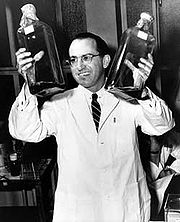
The Pitt Vaccine
PoliomyelitisPoliomyelitis
Poliomyelitis, often called polio or infantile paralysis, is an acute viral infectious disease spread from person to person, primarily via the fecal-oral route...
is a disease that can attack motor neurons resulting in paralysis. In the early 20th century, epidemics of polio began to hit the United States
United States
The United States of America is a federal constitutional republic comprising fifty states and a federal district...
and other industrialized countries. As hospital wards filled with patients in iron lung
Iron lung
A negative pressure ventilator is a form of medical ventilator that enables a person to breathe when normal muscle control has been lost or the work of breathing exceeds the person's ability....
s, and tens of thousands were left crippled, fear of contracting polio grew rampant and led to the closing of many public facilities. By 1952, the polio epidemic reached new heights in the U.S. with 57,628 cases reported. Meanwhile, in 1947, Jonas Salk
Jonas Salk
Jonas Edward Salk was an American medical researcher and virologist, best known for his discovery and development of the first safe and effective polio vaccine. He was born in New York City to parents from Ashkenazi Jewish Russian immigrant families...
had been recruited to Pitt where he set up the University's Virus Research Lab in the basement of what is now Pitt's Salk Hall
Salk Hall
Jonas Salk Hall at the University of Pittsburgh is a Pennsylvania state and Pittsburgh History and Landmarks Foundation Historic Landmark. The Art Deco building is named after Jonas Salk, who conducted his research on the first polio vaccine in a basement laboratory while on the faculty at the...
. By 1951, Salk and his team had begun immunization experiments in monkeys using dead polio virus. Soon, however, Salk began to test inoculations in paralyzed polio patients and by 1953 human trials among the general population were initiated (the majority of were Allegheny County residents). By the spring of the following year, the largest controlled field trials in medical history were underway and by 1955 the vaccine developed by Jonas Salk
Jonas Salk
Jonas Edward Salk was an American medical researcher and virologist, best known for his discovery and development of the first safe and effective polio vaccine. He was born in New York City to parents from Ashkenazi Jewish Russian immigrant families...
and his team of Pitt researchers, coined the Pitt Vaccine
Polio vaccine
Two polio vaccines are used throughout the world to combat poliomyelitis . The first was developed by Jonas Salk and first tested in 1952. Announced to the world by Salk on April 12, 1955, it consists of an injected dose of inactivated poliovirus. An oral vaccine was developed by Albert Sabin...
by Salk, was declared effective. Prior to 1962, when Albert Sabin's oral live-virus vaccine was approved, Pitt's Salk vaccine had reduced the incidence of polio in the United States by 95 percent. Together, these two vaccines eradicated naturally-occurring poliomyelitis from North
North America
North America is a continent wholly within the Northern Hemisphere and almost wholly within the Western Hemisphere. It is also considered a northern subcontinent of the Americas...
, South America
South America
South America is a continent situated in the Western Hemisphere, mostly in the Southern Hemisphere, with a relatively small portion in the Northern Hemisphere. The continent is also considered a subcontinent of the Americas. It is bordered on the west by the Pacific Ocean and on the north and east...
and Western Europe
Western Europe
Western Europe is a loose term for the collection of countries in the western most region of the European continents, though this definition is context-dependent and carries cultural and political connotations. One definition describes Western Europe as a geographic entity—the region lying in the...
. In 1999, the U.S. Office of Public Health and Science
Office of Public Health and Science
The Office of Public Health and Science is an operating agency of the United States Department of Health and Human Services and the managing personnel body for the United States Public Health Service. The office is under the direction of the Assistant Secretary for Health, who serves as the senior...
recommended a return of the use of the Salk dead-virus vaccine for routine inoculation. The breakthroughs in immunology and vaccine development at Pitt by Salk and his team are considered one of the most significant scientific and medical achievements in history.http://www.polio.pitt.edu/http://museum.pharmacy.pitt.edu/salk/
State relations
In 1966, Pitt was designated by PennsylvaniaPennsylvania
The Commonwealth of Pennsylvania is a U.S. state that is located in the Northeastern and Mid-Atlantic regions of the United States. The state borders Delaware and Maryland to the south, West Virginia to the southwest, Ohio to the west, New York and Ontario, Canada, to the north, and New Jersey to...
as a state-related
Commonwealth System of Higher Education
The Commonwealth System of Higher Education is the organizing body of Pennsylvania's "state-related" schools, which allows the independent control of the universities while supplying them with the public funds needed for operations at each institution. Universities in the System are considered...
university. As such, Pitt receives public funds (currently more than $160 million per annum) and offers reduced tuition to Pennsylvania residents, but is under independent control. Pitt is typically listed as a public university. Upon affiliation with the state, subsidized tuition led to a massive influx of new students and rapid expansion of Pitt's size and scope. In the 1970s, Pitt's football team returned to greatness with a national championship season in 1976 led by Hall of Fame
Pro Football Hall of Fame
The Pro Football Hall of Fame is the hall of fame of professional football in the United States with an emphasis on the National Football League . It opened in Canton, Ohio, on September 7, 1963, with 17 charter inductees...
running back Tony Dorsett
Tony Dorsett
Anthony "Tony" Drew Dorsett is a former American football running back in the National Football League for the Dallas Cowboys and Denver Broncos.-Early years:...
and continued success in the 1980s with players such as Hall of Fame
Pro Football Hall of Fame
The Pro Football Hall of Fame is the hall of fame of professional football in the United States with an emphasis on the National Football League . It opened in Canton, Ohio, on September 7, 1963, with 17 charter inductees...
quarterback Dan Marino
Dan Marino
Daniel Constantine "Dan" Marino, Jr. is a retired American football quarterback who played for the Miami Dolphins in the National Football League...
. In the 1980s, significant medical research in the field of organ transplantation was conducted by Thomas Starzl
Thomas Starzl
Thomas E. Starzl is an American physician, researcher, and is an expert on organ transplants. He performed the first human liver transplants, and has often been referred to as "the father of modern transplantation."-Life:...
, establishing Pitt as the world leader in the field of organ transplantation. In 1991, long-time chancellor Wesley Posvar
Wesley Posvar
Wesley Wentz Posvar was the fifteenth Chancellor of the University of Pittsburgh.-Biography:Posvar was born September 14, 1925 in Topeka, Kansas. He attended West Point, graduated first in his class in 1946, and after graduation he joined the U.S. Army Air Corps, which later became the U.S. Air...
retired after 24 years in office. His administration is best known for elimination of the university's debt from its 1960s financial crisis and growing the school's prestige and endowment. Under Posvar, Pitt's operating budget grew sevenfold to $630 million and its endowment tripled to $257 million. He also established the Honors College, the School of Health-Related Professions, the University Center for International Studies, the Center for Philosophy of Science, and the University Center for Social and Urban Research.
Into the 21st century
In 1999, Pitt StadiumPitt Stadium
Pitt Stadium was a stadium located on the campus of the University of Pittsburgh in the Oakland section of Pittsburgh in the U.S. state of Pennsylvania from 1925 to 1999. It served primarily as the home of the University of Pittsburgh's football team, the Pittsburgh Panthers...
, the long-time home of the Pitt Panthers, was razed. Reminiscent of its days playing in Exposition Park
Exposition Park (Pittsburgh)
Exposition Park was a baseball park in Pittsburgh, Pennsylvania from 1890 to circa 1915. It was located on the north side of the Allegheny River across from Pittsburgh's downtown area. Prior to the construction of this version of Exposition Park, two previous ballparks of the same name were...
, the team moved its venue downtown to Heinz Field
Heinz Field
Heinz Field is a stadium located in Pittsburgh, Pennsylvania. It primarily serves as the home to the Pittsburgh Steelers and University of Pittsburgh Panthers American football teams, members of the National Football League and National Collegiate Athletic Association respectively...
in 2001. A new 12,508 seat multipurpose arena, the Petersen Events Center
Petersen Events Center
Not to be confused with Petersen Sports Complex.The John M. and Gertrude E. Petersen Events Center is a 12,508-seat multi-purpose arena on the campus of the University of Pittsburgh in Pittsburgh, Pennsylvania. It hosts the men's and women's Pitt Panthers basketball teams...
, is home to the University's basketball teams and convocation ceremonies and also contains a 40000 sq ft (3,716.1 m²) student recreation center. Other substantial building projects have occurred on campus, including renovation of the former Masonic Temple into Alumni Hall
Alumni Hall (University of Pittsburgh)
Alumni Hall at the University of Pittsburgh is a Pittsburgh History and Landmarks Foundation Historic Landmark that was formerly known as the Masonic Temple in Pittsburgh. Constructed in 1914-1915, it was designed by renowned architect Benno Janssen of Janssen & Abbot Architects...
, construction of several new residence halls in the upper and lower campus, and construction of the Sennott Square building. Mark Nordenberg
Mark Nordenberg
Mark A. Nordenberg , also known as "Nordy" to many students, is a lawyer and the seventeenth Chancellor of the University of Pittsburgh.In 1977, he joined the faculty of the University of Pittsburgh School of Law...
has been chancellor of the University since 1995 and is leading Pitt through a period of substantial progress, including a $2-billion capital-raising campaign that is over half-way toward achieving it goal http://www.giveto.pitt.edu/ and a $1-billion 12-year facilities plan. Pitt's endowment in 2007 reached $2.254 billion, a 25 percent increase from 2006. It ranks 28th among all college endowments and 8th nationally among public universities.
Heads of the University of Pittsburgh
| Head | Years | Name of Institution | Head | Years | Name of Institution | ||
|---|---|---|---|---|---|---|---|
| Hugh H. Brackenridge Hugh Henry Brackenridge Hugh Henry Brackenridge was an American writer, lawyer, judge, and justice of the Pennsylvania Supreme Court.A frontier citizen in Pittsburgh, Pennsylvania, USA, he founded both the Pittsburgh Academy, now the University of Pittsburgh, and the Pittsburgh Gazette, still operating today as the... Founder |
1787 | Pittsburgh Academy | Milton Goff Milton Goff Milton B. Goff was the seventh chancellor of the University of Pittsburgh, then called the Western University of Pennsylvania, serving from 1884 to 1890. He also served as acting chancellor from 1880-1881.... acting Chancellor |
1880–1881 | Western University of Pennsylvania | ||
| George Welch George Welch George Welch was a World War II flying ace, a Medal of Honor nominee, and an experimental aircraft pilot after the war... Principal |
1789 | Pittsburgh Academy | 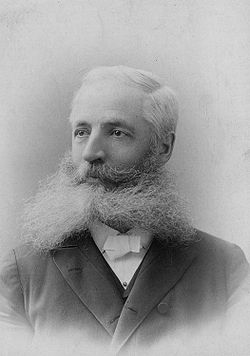 Henry MacCracken Henry MacCracken Henry Mitchell MacCracken was an American educator , born in Oxford, Ohio. MacCracken graduated from Miami University in 1857. After a brief teaching career, he entered the Presbyterian ministry in 1863... Chancellor |
1881–1884 | Western University of Pennsylvania | ||
| Robert Andrews Principal |
1796–1800 | Pittsburgh Academy | Milton Goff Milton Goff Milton B. Goff was the seventh chancellor of the University of Pittsburgh, then called the Western University of Pennsylvania, serving from 1884 to 1890. He also served as acting chancellor from 1880-1881.... Chancellor |
1884–1890 | Western University of Pennsylvania | ||
| Robert Steele Principal |
1800–1801 | Pittsburgh Academy |  William J. Holland William Jacob Holland William Jacob Holland was the eighth Chancellor of the University of Pittsburgh and Director of the Carnegie Museums of Pittsburgh. He was an accomplished zoologist and paleontologist, as well as an ordained Presbyterian minister.-Life:Holland was born August 16, 1848 in Jamaica, West Indies, the... Chancellor |
1891–1901 | Western University of Pennsylvania | ||
| John Taylor Principal |
1801 | Pittsburgh Academy | 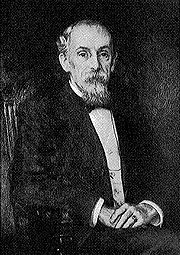 John A. Brashear acting Chancellor |
1901–1904 | Western University of Pennsylvania | ||
| Benjamin B. Hopkins Principal |
1803-1804? | Pittsburgh Academy | Samuel B. McCormick Samuel McCormick Samuel Black McCormick was the ninth Chancellor of the University of Pittsburgh.His administration is best known for changing the name of the university and moving and expanding it from Allegheny City to its current location in Oakland... Chancellor |
1904–1921 | Western University of Pennsylvania/ University of Pittsburgh |
||
| James Mountain James Mountain James Mountain was a prominent lawyer, educator and academic administrator in Western Pennsylvania during the early 19th century. He was Master of Pittsburgh Academy from 1803-1807. He was also among the earliest instructors and leaders of Canonsburg Academy .-References:... Principal |
180? | Pittsburgh Academy | John G. Bowman John Gabbert Bowman John Gabbert Bowman was the tenth Chancellor of the University of Pittsburgh and the ninth President of the University of Iowa.... Chancellor |
1921–1945 | University of Pittburgh | ||
| Robert Patterson Principal |
1807–1810 | Pittsburgh Academy | Rufus H. Fitzgerald Rufus Fitzgerald Rufus Henry Fitzgerald was the eleventh Chancellor of the University of Pittsburgh.He graduated from the University of Tennessee-Knoxville in 1919... Chancellor |
1945–1955 | University of Pittsburgh | ||
| Joseph Stockton Joseph Stockton Joseph A. Stockton was a prominent Presbyterian minister in Western Pennsylvania. He founded Meadville Academy, which later became Allegheny College in Meadville, Pennsylvania... Principal |
1810–1819 | Pittsburgh Academy | Charles B. Nutting acting Chancellor |
1955–1956 | University of Pittsburgh | ||
 Robert Bruce Robert Bruce (Pitt Chancellor) Reverend Doctor Robert Bruce is often regarded as the first chancellor of the University of Pittsburgh, then called the Western University of Pennsylvania, serving from 1819 to 1835 and again from 1836 to 1843, although for his first term he had the title "Principal" and for his second term the... Principal |
1819–1835 | Western University of Pennsylvania | Edward H. Litchfield Edward Litchfield Edward Harold Litchfield was an American educator and the twelfth Chancellor of the University of Pittsburgh. He is best known for a major expansion of the university, but also a failure to raise sufficient capital to fund such growth, eventually leading to his resignation in July 1965.He earned... Chancellor |
1956–1965 | University of Pittsburgh | ||
| Gilbert Morgan Gilbert Morgan Reverend Dr. Gilbert Morgan is generally numbered as the second chancellor of the University of Pittsburgh, then called the Western University of Pennsylvania, serving only one year from 1835 to 1836, although Morgan's official title at the time was "President". Morgan was the first head of the... President |
1835–1836 | Western University of Pennsylvania | Stanton C. Crawford Stanton Crawford Stanton Chapman Crawford was the thirteenth Chancellor of the University of Pittsburgh.He was appointed Acting Chancellor, somewhat unwillingly due to health concerns, following the departure of Edward Litchfield. Crawford died of a heart attack January 26, 1966... Chancellor |
1965–1966 | University of Pittsburgh | ||
 Robert Bruce Robert Bruce (Pitt Chancellor) Reverend Doctor Robert Bruce is often regarded as the first chancellor of the University of Pittsburgh, then called the Western University of Pennsylvania, serving from 1819 to 1835 and again from 1836 to 1843, although for his first term he had the title "Principal" and for his second term the... President |
1836–1843 | Western University of Pennsylvania | David H. Kurtzman David Kurtzman David Harold Kurtzman was the fourteenth Chancellor of the University of Pittsburgh.He had been Vice Chancellor of Finance and was appointed Acting Chancellor after the sudden death of Stanton Crawford. Crawford died of a heart attack January 26, 1966... Chancellor |
1966–1967 | University of Pittsburgh | ||
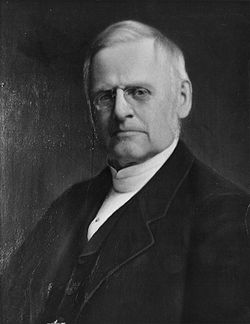 Heman Dyer Heman Dyer Heman Dyer is generally numbered as the third chancellor of the University of Pittsburgh, then called the Western University of Pennsylvania, serving from 1836 to 1849, although McLaren's official title at the time was "President"... President |
1843–1849 | Western University of Pennsylvania | Wesley W. Posvar Wesley Posvar Wesley Wentz Posvar was the fifteenth Chancellor of the University of Pittsburgh.-Biography:Posvar was born September 14, 1925 in Topeka, Kansas. He attended West Point, graduated first in his class in 1946, and after graduation he joined the U.S. Army Air Corps, which later became the U.S. Air... Chancellor/President |
1967–1991 | University of Pittsburgh | ||
| David H. Riddle David Hunter Riddle David Hunter Riddle was the ninth and last president of Jefferson College from 1862 until its union with Washington College to form Washington & Jefferson College in 1865... acting President |
1849–1855 | Western University of Pennsylvania | J. Dennis O'Connor J. Dennis O'Connor John Dennis O'Connor, known as J.Dennis O'Connor, is an American biologist and was the sixteenth Chancellor of the University of Pittsburgh.-Career:... President/Chancellor |
1991–1995 | University of Pittsburgh | ||
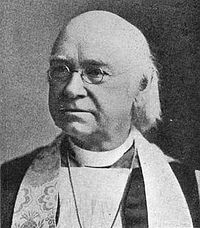 John F. McLaren John McLaren (Pitt Chancellor) John F. McLaren is generally numbered as the fourth chancellor of the University of Pittsburgh, then called the Western University of Pennsylvania, serving from 1855 to 1858, although McLaren's official title at the time was "President"... President |
1855–1858 | Western University of Pennsylvania | 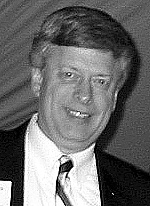 Mark A. Nordenberg Mark Nordenberg Mark A. Nordenberg , also known as "Nordy" to many students, is a lawyer and the seventeenth Chancellor of the University of Pittsburgh.In 1977, he joined the faculty of the University of Pittsburgh School of Law... Chancellor |
1995–present | University of Pittsburgh | ||
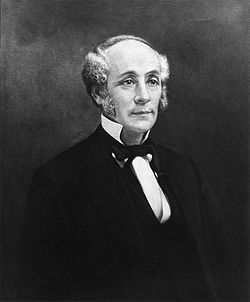 George Woods George Woods (Pitt Chancellor) George Woods was the fifth chancellor of the University of Pittsburgh, then called the Western University of Pennsylvania, serving from 1858 to 1880. Although Woods is generally numbered as Pitt's fifth chancellor, he was actually the first head of the university to have the title "Chancellor" as... Chancellor |
1858–1880 | Western University of Pennsylvania |

